
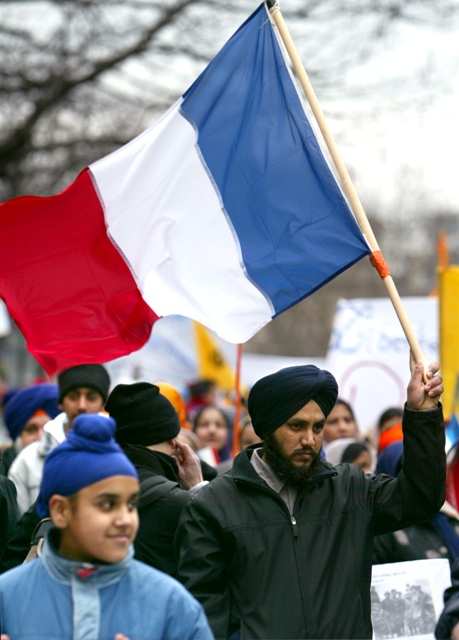 French legislators are currently considering a ban that would prevent Muslim women the right to wear full-body veils in public areas such as buses, trains, hospitals, restaurants, schools and other public places. Since 2004, head scarves and other signs of religious affiliation have been banned from public schools by a government determined to enforce France’s tradition of strict secularism amid fears of growing fundamentalism. Although Sikhs have also been fighting for their right to wear turbans in France – what will an overt ban, which sends a clear statement to its citizens about religious tolerance, mean to other minority groups in the country?
French legislators are currently considering a ban that would prevent Muslim women the right to wear full-body veils in public areas such as buses, trains, hospitals, restaurants, schools and other public places. Since 2004, head scarves and other signs of religious affiliation have been banned from public schools by a government determined to enforce France’s tradition of strict secularism amid fears of growing fundamentalism. Although Sikhs have also been fighting for their right to wear turbans in France – what will an overt ban, which sends a clear statement to its citizens about religious tolerance, mean to other minority groups in the country?
Identifying the burqa as alien to French culture, say the ban’s critics, also fans xenophobic sentiment. What will be declared un-French next? The sari? The Sikh turban? Day-Glo bicycle shorts? [link]
Interestingly – there are only about 2,000 Muslim women in France who wear these veils. Many say that France, a country that prides itself on liberal democracy, is simply taking away the individual freedom to make a choice. As an Op-Ed piece in the NYT asks, “Why the French obsession with the burqa? After all, as the French government itself has conceded, only about 1,900 women wear the full-body covering. So why are over half of the respondents in recent public opinion polls in favor of a ban on it?”
Over the past few months, we have come across various articles in the media depicting the state of affairs for students of Indian origin living in Australia. Attacks against Indians (allegedly racially motivated) and, what was perceived to be, a poor response by the police and leaders sparked protests in both Australia and India. Widespread media coverage in India has been especially critical of Australia’s handling of this violence. On the other hand, however, the Indian media’s coverage has been likened to hysteria by many in Australia. Many are saying that the Indian media has done more harm than good in their coverage of the events, and in doing so, have shadowed the real problems faced by students in Australia.
So what exactly is going on? A few days ago we received an email from a TLH reader in Australia who wanted to share his perspective on the situation:
I am a year 12 student from Australia about to go into university and I would just like to express some opnions which I hope you could take to the readers of The Langer Hall. Recently there has been much uproar in the Indian media and community about these so-called racist attacks on Indian students in Australia. It really pained me to hear how such events could occur in what has developed to be one of the most multicultural countries in the world. Having just finished school I can say that the range of cultures and backgrounds which I have been exposed to…has been awesome. In my fifteen years as a turbaned boy I have not once felt like this country holds any form of racist ideas against me. My father has been a turbaned bus driver, and now a train driver for many years and he expresses similar ideas to me… Just recently the news begins to appear through investigations by Australian Police that many of these attacks on Indian students..were in fact carried out by other Indian students. I am not saying that all the attacks that occur…are by Indians…but i am raising the point that Australia is not as bad as many people make it seem. I see in Indian newspapers everyday that there was some attack on an Indian and they request Indians to stop going to Australia. Yet not one paper made mention of the fact that it was Indian students who had been arrested for the murders. Well I suppose that is expected in India… [-KS]

The Multifaith Calendar is looking for art submissions under the theme “Celebrating Diversity”. They would like to feature art from as many different faith groups as possible. This calendar is a great educational tool that lists and explains holidays that are important to 14 different world faiths including Sikhism.
The theme for the 2011 edition is: Celebrating Diversity. Work can be of any medium. The interpretation of the theme will be determined by the collection, so we invite artists to submit images that capture a unique or poignant expression of art or people celebrating their faith. We are looking to showcase a diversity of faiths in the collection. We encourage all artists to submit images, including artists who have had their work showcased in past Multifaith Calendars. [link]
Sounds like a great project and a wonderful opportunity for the many developing artists in our community. Submissions are due by February 28th, 2010. For more information, please see: www.multifaithcalendar.org
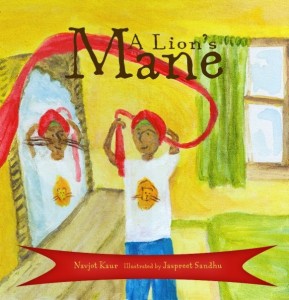 On our weekly library trips, I find myself going through shelf after shelf of children’s books trying to find something both entertaining and challenging for my young and enthusiastic readers. Often times, the books we find are one-dimensional; either instructive, or funny, or downright silly. Rarely do I come across a book that strikes a balance of being both educational and inspiring…this is what I found in A Lion’s Mane by Navjot Kaur
On our weekly library trips, I find myself going through shelf after shelf of children’s books trying to find something both entertaining and challenging for my young and enthusiastic readers. Often times, the books we find are one-dimensional; either instructive, or funny, or downright silly. Rarely do I come across a book that strikes a balance of being both educational and inspiring…this is what I found in A Lion’s Mane by Navjot Kaur
A Lion’s Mane is about the journey of a young Sikh boy who while discovering why he has his long mane (kesh), also learns about the principles of his faith. Concepts like patience, generosity, wisdom, and courage are all woven in to his beautiful red dastaar that guide you through the story.
In addition to the captivating illustrations, it is the simple messages that are reinforced throughout the story that I found particularly meaningful and easy for children to process. Statements like,
“When we learn something new, it makes each of us stronger”
“Being a Khalsa knight gives me the courage to stand up to bullies”
Although I have read several children’s books that touch on the Sikh experience, what I appreciate most about A Lion’s Mane, is how Sikh religious and cultural principles are raised in the context of other cultures and communities with similar principles. I had no idea of the symbolic role the lion played in Native American Hopi culture. In explaining who we are to non-Sikh communities, I think it is just as important to share how our traditions are similar as it is to show how we are different. This pushed me to learn a bit more about some of the other people and cultures mentioned. I found the glossary most useful in explaining to my children who is Wangari Mathai and what the Anishinaabe tribe is.
“Everybody can be great…because anybody can serve. You don’t have to have a college degree to serve. You don’t have to make your subject and verb agree to serve. You only need a heart full of grace. A soul generated by love. ” – Dr. Martin Luther King Jr.
Last week, in celebration of Dr. King’s legacy, the DC Metro satellite of Kid’s Against Hunger drew volunteers all across the DC, Maryland, and Virginia area for a hugely successful meal packaging event.
Kid’s Against Hunger (KAH) is a non-profit organization with the mission to significantly reduce the number of hungry children in the United States and to feed starving children throughout the world. This is accomplished through partnering with satellite organizations who raise funds, organize volunteers, and arrange events where meal packets (consisting of soy, rice, vegetable blend, and flavored vitamin powder) are filled, sealed, and packed for a population in need. Meals are then transported through KAH’s broad network of humanitarian organizations.
Drug abuse is an epidemic that is hitting Punjab at high rates. We hear about Punjabi men being addicted to drugs and the ramifications of their addiction on them and their families.
Prerna Suri of Al Jazeera reports on the devastating effects of drugs in Amritsar. The city’s location near Pakistan and Afghanistan has made it a primary target for drug trade and abuse. According to the report, seventy percent of youth (15-35 years) in Amritsar are addicted to heroin.
Suri highlights how the drug trade happens, its effects on those who abuse narcotics, and the ramifications of drug abuse for the addicits’ families.

I am a strong believer that Sikhi can play a strong role in both the prevention and recovery from drug abuse. Rather than allow drugs to take over our spiritual capital, we can use our spiritual strength to help heal those who are suffering from drug abuse and prevent others from entering this kind of addiction. You can read about one Sikh’s experience of visiting Akal Charitable De-addiction Centre , a drug recovery program in Sangrur, Punjab.
Happy Lohri! 
Lohri is celebrated around January 13th every year. In Punjab, it marks the beginning of the harshest part of winter. Here’s what you need to get started with your celebration: a giant bonfire, popcorn, sweets, and songs about Dulha Bhatti, a robber who helped the poor.
Lohri is usually celebrated in the outdoors by friends and family who get together and have a bonfire in the evening. Lohri signifies onset of intense winter in Punjab and surrounding areas. Cold weather is good for wheat hence farmers celebrate Lohri so that their crops lead to a good harvest.
During the day, children go from door to door singing folk songs in praise of Dulha Bhatti, a thief in folklore who helps the poor and fights for their rights. These children are given sweets and savories, and occasionally, money. These collections are known as Lohri, and they are distributed at night during the festival. Some may be offered to the sacred fire. Peanuts, popcorn and other food items are also thrown into the fire as an offering to the God of Fire, Agni. [wikipedia]
Usually, in Punjab, families have an especially large Lohri celebration if a boy has been born in the family in the prior year. We’re talking DJs, catered food, and dancing all night in the streets (at least in the city).
This year, you can make Lohri special by donating to Ladoos: Pink & Blue.
Religions derive their power and popularity in part from the ethical compass they offer. So why do so many faiths help perpetuate something that most of us regard as profoundly unethical: the oppression of women? [NYT]
An op-ed piece in the NYT, by the notable Nicholas Kristof, looks at the way many religions perpetuate and sanctify the oppression of women. He discusses that many abuses, such as mass rapes, arise out of a social context in which women are considered second-class citizens and argues that this social context is something religions have helped shape rather than fought hard to change. Kristof wrote this op-ed after listening to former President Jimmy Carter’s speech to the Parliament of the World’s Religions in Australia last month.
Mr. Carter, who sees religion as one of the “basic causes of the violation of women’s rights,” is a member of The Elders, a small council of retired leaders brought together by Nelson Mandela. The Elders are focusing on the role of religion in oppressing women, and they have issued a joint statement calling on religious leaders to “change all discriminatory practices within their own religions and traditions.”
Where do the elderly fit into India new modern image? Often in South Asian families, caring for the elderly is not a question-it will happen. In West we know of the many stories of how the elderly are mentally, physically, and 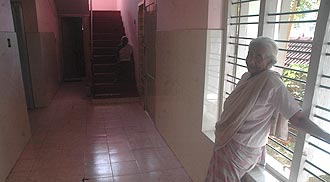 emotionally abused by their children. Often the elderly are forced into starting their life over again in a new country coupled with the strain of supporting themselves at an age when they can no longer work and are socially dependent on their children.
emotionally abused by their children. Often the elderly are forced into starting their life over again in a new country coupled with the strain of supporting themselves at an age when they can no longer work and are socially dependent on their children.
However, in India, we are told it’s not the case. Families care for their elderly-some are even forced to because all the property is in their elderly parents names. But New America Media reports that the number of elderly left to care for themselves in India is skyrocketing and the country has no infastructure to care for them. For example, with an aging population of 80 million, Indian old age homes do not accept patients with dementia. Dementia is a common problem that afflicts the elderly.
Today, January 5th, Sikhs around the globe will come together to celebrate Guru Gobind Singh Ji’s gurpurab. On this day we celebrate our Guru and the gift that was bestowed upon us. Guru Ji’s famous quote tells us that living as a Sikh is as much important as appearing as a Sikh and that with both, hand in hand, we are a Sikh of the Guru.
![]()
The shabad below, Nasro Mansoor, was written in persian by Bhai Nand Lal Singh. It’s beautiful! Gurpurab greetings to all!
A few months ago, RP Singh wrote a very timely post on compassion and what it means to Sikhs. In Gurbani, the word Daya often translates to compassion, a trait which is long known in our history. One of the Panj Pyara or beloved five was Bhai Daya Singh and thus, Compassion along with Justice, Courage, Discipline and Leadership are important elements of the Khalsa.
As a reminder of this and as we get ready to begin a New Year – I wanted to share with you the Charter for Compassion – “a call to bring the world together.” It is stated that, The principle of compassion lies at the heart of all religious, ethical and spiritual traditions, calling us always to treat all others as we wish to be treated ourselves. Compassion impels us to work tirelessly to alleviate the suffering of our fellow creatures, to dethrone ourselves from the centre of our world and put another there, and to honour the inviolable sanctity of every single human being, treating everybody, without exception, with absolute justice, equity and respect. [link]
I would encourage you to watch the video below and sign the charter. It might be a passive form of activism, however, let it be a nudge to hold ourselves accountable in the coming years – to live compassionately and emulate Sikhi in one of it’s purest forms.
 The events following the June elections in Iran continue to reverberate. The allegations of widespread election fraud led to hundreds of thousands of Iranian youth to take to the streets and asking “Where’s My Vote?”
The events following the June elections in Iran continue to reverberate. The allegations of widespread election fraud led to hundreds of thousands of Iranian youth to take to the streets and asking “Where’s My Vote?”
A regime unable to answer its citizenry and an escalating use of repressive tactics has led many to begin questioning the legitimacy of the government. Born out of a revolution in 1979, a generation has grown up on legitimizing the current regime through understanding of the tyranny of the Shah’s. However, the tactics unleashed in the wake of the elections has shifted the public from asking about votes to calling for the ouster of the Supreme Leader. Khamenei has none other to blame than himself through his partisanship in siding with Ahmadinejad, rather than standing above the fray.
A few weeks back, while skimming through the news, I found an interesting report on Canadian Prime Minister 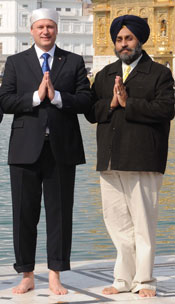 Stephen Harper’s recent visit to the Darbar Sahib in Amritsar. Although I didn’t care much for the hoopla around his visit, I did find it interesting that he “offended” Sikhs by refusing to accept parshad or langar.
Stephen Harper’s recent visit to the Darbar Sahib in Amritsar. Although I didn’t care much for the hoopla around his visit, I did find it interesting that he “offended” Sikhs by refusing to accept parshad or langar.
As I understand it, the preparation of parshad (grace) is unique in that it is ceremonially touched by a kirpan (kirpan bhet), which serves as an indication of the Guru’s acceptance and blessing. It is then distributed to 5 Amritdhari Sikhs representing the Guru Khalsa Panth. A Sikhs’ consumption of parshad displays a submission to the Guru. So accepting parshad is essentially “accepting His grace.” I’ve also been taught that parshad should be distributed after the hukamnama is read, as accepting parshad symbolizes acceptance of the hukamnama.
Now, whether or not Sikhs themselves understand the hukamnama, or even listen to it is another post for another day – but, if accepting parshad is accepting the Guru’s hukam, should a non-believer accept it? Although the Rehat Maryada states that parshad should be offered to everyone equally (as it should), should we be offended if someone rejects it? If a non-Sikh understands the meaning behind our practice and politely refuses it out of respect, shouldn’t we appreciate it instead?
I remember years ago at a Sikh Day Parade in Washington DC, as a handful of us were walking through the sidewalks handing out “Who are the Sikhs” pamphlets and answering questions from onlookers, an elderly BibiJi was darting through the crowd distributing parshad to random strangers. As shocked as I was to see this, it couldn’t compare to the shock on the face of those who received it. Most were not sure what to do with it, or joked about it with their friends, while others were seen throwing it away. I’m sure the BibiJi’s heart was in the right place, but what were we hoping to accomplish by this?
My question is…how can we value our traditions if we don’t even understand them?
And if we don’t value our traditions, how can we expect others to?
Continue Reading »
“There is this very distinctive and self-incriminating silence within communities that have a history of ‘honour’ killings,” he says. “The so-called community leaders, the influential religious groups and the local language newspapers remain deafeningly silent when these killings happen. But that silence makes them just as guilty as the people who kill in the name of honour.” [link]
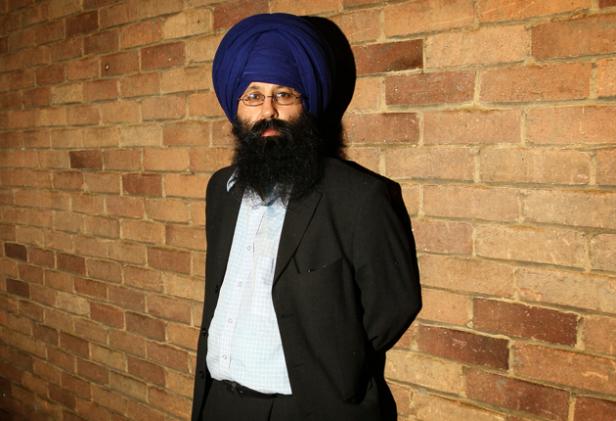 Statements like the one above, has made Jagdeesh Singh (pictured) a controversial figure within the suburbs of west London -home to many of Britain’s 400,000-plus Sikhs. While many young Sikhs consider Jagdeesh a role-model for the way he stands up and speaks against parochial traditions, many older and more conservative members of the community believe he is a troublemaker “who needlessly provokes controversy by shining an unwelcome spotlight on things that should not be aired in public”.
Statements like the one above, has made Jagdeesh Singh (pictured) a controversial figure within the suburbs of west London -home to many of Britain’s 400,000-plus Sikhs. While many young Sikhs consider Jagdeesh a role-model for the way he stands up and speaks against parochial traditions, many older and more conservative members of the community believe he is a troublemaker “who needlessly provokes controversy by shining an unwelcome spotlight on things that should not be aired in public”.
Eleven years ago, on 15 December 1998, Surjit Athwal disappeared during a holiday in the Indian Punjab with her in-laws. The 27-year-old customs officer at Heathrow had been desperately unhappy in her 10-year marriage to her husband Sukdave and had found love in the arms of another man. After years of abuse, she finally plucked up enough courage to seek a divorce but was persuaded by her domineering mother-in-law Bachan to travel to the Punjab for a family wedding in what she thought would be a final act of reconciliation. Instead, she was lured to her death. It took Jagdeesh Singh years to persuade the police to investigate his sister’s disappearance properly, and many more years of painstaking detective work to encourage one of the Athwal family members to testify. Finally, nine years after Surjit disappeared, Sukdave and Bachan Athwal were found guilty of ordering her death at a family council meeting. [link]
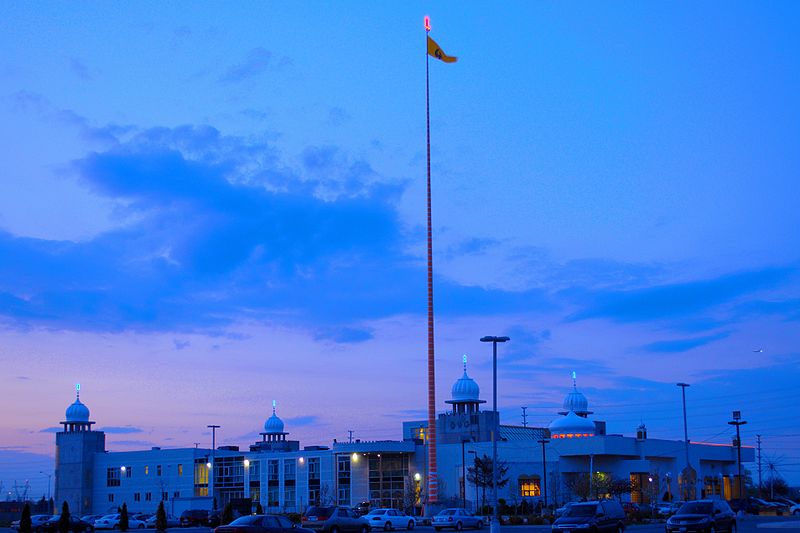 We often lament the state of our gurdwaras but we should just as often stop and think about how much we have accomplished.
We often lament the state of our gurdwaras but we should just as often stop and think about how much we have accomplished.
Tonight I had a chance to visit the famous Ontario Khalsa Darbar (aka Dixie) Gurdwara in Mississauga/Brampton, Ontario. On a frigid Friday night in December, the place was packed with sangat and programs.
In one hall, a Hindu Panjabi family was having a bhog for a deceased elder. On the other side agurmat sangeet teacher was having a kirtan for her daughter with beautiful kirtan being sung in raag by her many young students. In the adjoining halls, the United Sikhs organization was having their 2nd Annual Global Sikh Civil Rights Conference with tonight’s opening session focusing exclusively women’s issues. Upstairs, Harmeet Singh was holding his usual Friday session with hundreds of youth and their families. And to top this off Bhai (no longer Sant) Niranjan Singh Jawadi Kalan was performing kirtan to a packed hall in the main hall. Almost every program was in English or being translated into English on the screens.
So while we can (and should) continue to critically analyze the hardware (physical structures) and software (programs/initiatives) of our Sikh institutions, we need to simultaneously recognize when progress is being made.
Growing up I would have killed to have been a part of each of those individual programs happening at Dixie Gurdwara tonight (well maybe not the bhog) and today all of those functions were happening on the same day under the same roof.
On many days, it seems like we’re moving two steps back, but tonight I saw at least one step forward.
12/19/09
Healthcare reform, immigration reform, banking reform, and the list goes on. This past week a diverse coalition lead by Rep. Luis Gutierrez (D-Ill) are laying down the marker in 2009 for comprehensive immigration reform by introducing the Comprehensive Immigration Reform for America’s Security and Prosperity (CIR-ASAP) Act of 2009. This bill has not been passed yet; it has only been introduced.
In a country built on the hard work of immigrants, it is imperative that this group be protected in the United States. Recently, there was a report that 1/3 of Los Angeles’s economy is dependent on immigrants. Also, immigrants are known for their entrepreneurship in small businesses. Tuyet Le, Executive Director of the Asian American Institute, says: “Family-based immigration has long created the foundation for strong, entrepreneurial communities across the country. This bill will reunite immigrants with their loved ones and will also provide some increases in high-skill temporary worker visas.”
This legislation focuses on undocumented students, family reunification, and worker visas-issues affecting our Punjabi Sikh community in America. For example, CIR-ASAP would allow undocumented high school graduates who came to the United States before the age of 16 to attain legal residency. This residency would open up educational and financial aid opportunities. This portion of the bill is modeled after the DREAM Act of 2009, except that it shortens the six-year wait period to three years and removes fines.
Guest blogged by justasikh

Every so often you come across news that your mind struggles to believe is real.
Is this real? A joke? Either way, the reaction is likely as interesting as the cause.
Haagen Dazs, a prolific producer of ice cream the world over approves a new location to be opened in Delhi, India. So far, so good.
There’s an emerging middle class lusting after one another’s things like an episode of the 1960’s Mad Men. Lots of international travelers. Connaught Place. Lally Singh and his lovely motorcycle shop.
Now, we have Haagen-Dazs. It’s the unevolved Kulfi, evolved. Made how it should be, I guess?
Look what is in Delhi!
Gives new meaning to having a case of the dreadful and queasy Delhi-belly.
So, let’s see this train wreck coming from a mile away. Allow the self-annointed linguist in me to protest.
A charity based in Southall, called the Drug and Alcohol Action Programme (DAAP) will be joining forces with local Gurdwaras to address high rates of alcohol abuse taking place at Asian, particularly Punjabi Sikh, weddings. Perminder Dhillon, CEO of the charity states that “it is no longer acceptable to ignore the dangerous levels of alcohol drinking at these events.”
There is a mistaken view in Asian communities that religious and cultural backgrounds act as a barrier to the kind of drunken scenes so often seen in so many town centres all over the country. She said: “Many parents feel pressurized to provide a huge quantity of alcohol at weddings even if they themselves are non-drinkers”. [link]
She goes onto say that there are huge expectations on families to provide alcohol at weddings – often demanded by the groom’s side. This problem has become so extensive now that it is likened to demanding dowry and by partaking, “we end up supporting users with alcohol-related health problems during the binge-drinking period”.
Research published in the British Medical Journal suggests that men of South Asian origin in Britain are four times more likely to die of alcohol-related liver problems than other ethnic groups. Eighty percent of those South Asians who are vulnerable to alcohol-related mortality are Sikhs.
The charity has stated that the strategy they will use to combat this issue is simple – they will “name and shame” those involved and publicly condemn individuals on their website.
Blogged by: Amol Singh
 In events and programs highlighted at remembering 25 years since 1984, the most vocal criticisms of these remembrances revolve around a desire to forgive or forget. For many it seems regressive and contradictory to highlight these tragedies while India hoists its Sikh Prime Minister to the world’s stage. On November 18, Amnesty International released a public letter to President Barack Obama, to mark Manmohan Singh’s impending visit to Washington, in which they highlighted grievances of not only Sikhs against the Indian Center, but also those of Muslims, the victims of the Union Carbide tragedy in Bhopal, the entire Northeast, Kashmir, Dalits, Adivasis, Chattisgarh, Manipur, etc.
In events and programs highlighted at remembering 25 years since 1984, the most vocal criticisms of these remembrances revolve around a desire to forgive or forget. For many it seems regressive and contradictory to highlight these tragedies while India hoists its Sikh Prime Minister to the world’s stage. On November 18, Amnesty International released a public letter to President Barack Obama, to mark Manmohan Singh’s impending visit to Washington, in which they highlighted grievances of not only Sikhs against the Indian Center, but also those of Muslims, the victims of the Union Carbide tragedy in Bhopal, the entire Northeast, Kashmir, Dalits, Adivasis, Chattisgarh, Manipur, etc.
Even though India is the world’s largest democracy, serious and disturbing human rights abuses are ongoing, including rape, extrajudicial executions, deaths in police and military custody, torture, cruel, inhuman, and degrading treatment, arbitrary arrests, and dowry deaths. The Government of India not only fails to prevent these abuses, but also shelters members of security forces from facing justice. People living in several of the northeastern states of India and in Kashmir, religious minorities, those belonging to the lowest social order called “Dalits”, and indigenous communities called “adivasis” face the brunt of these abuses. Other socially and economically marginalized groups including women face discrimination at the hands of the police and criminal justice system. Although laws were passed to address some of these human rights abuses, serious concerns remain about the implementation of such laws.
Some of the specific contexts in which mass abuses were or continue to be committed include:
Mass killings of Sikhs: Over three thousand Sikhs were massacred when the governing Congress Party incited mob violence targeting Sikh civilians in reaction to the 1984 assassination of Prime Minister Indira Gandhi by her Sikh bodyguards. Scores of women were gang raped and some were burnt alive. After two decades, a judicial commission concluded that members of the governing Congress Party were involved. Twenty five years have passed since the massacre, but only a few have been brought to justice for this mass killing. [Read Full Text]
Guest blogged by sikhpulse
Before a beaded string of musical melodies lies a riddle. This riddle, composed by Guru Arjan Dev Ji, provides much clarity and purpose when revealed.
Mundavani, one of the final hymns of the Guru Granth Sahib, is sometimes translated as “riddle.” It precedes Raagmala, “the beaded string of musical melodies.” Mundavani is also described as Guru Ji’s “closing seal” of the Guru Granth Sahib as this composition served to authenticate and preclude any apocryphal additions to the bani. Like most of you, I have been in touch with these six lines since I was a wee little Sikh. And yet for years I only listened. It was only recently that the riddle of light shined within my mind, heart and spirit.
![]()
Mundavani, Fifth Mehl:
![]()
Upon this Plate, three things have been placed: Truth, Contentment and Contemplation.
![]()
The Ambrosial Nectar of the Naam, the Name of our Lord and Master, has been placed upon it as well; it is the Support of all.
![]()
One who eats it and enjoys it shall be saved.
![]()
This thing can never be forsaken; keep this always and forever in your mind.
![]()
The dark world-ocean is crossed over, by grasping the Feet of the Lord; O Nanak, it is all the extension of God. ||1||


